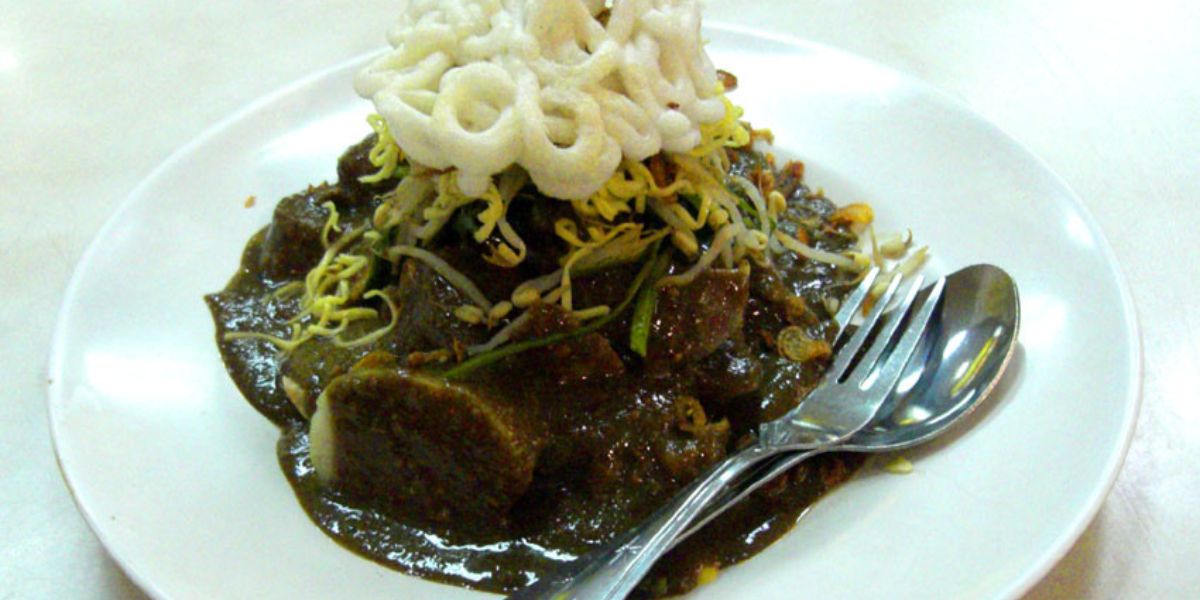The Struggle of a Man from Malang Who Successfully Reached Mecca by Bicycle, Full of Inspiration
Habibie Noor Muhammad, a man from Malang, successfully cycled to Mecca, covering a distance of 7,000 km through 7 countries. Check out his story!

Kapanlagi.com - Beef snout, a meaty part full of character, has become a star in various traditional dishes from East Java. The name "cingur" itself is derived from Javanese, meaning "mouth," referring to the area of the nose, cheeks, and lips of the cow that offers a chewy texture and tantalizing flavor. For centuries, beef snout has been a favorite in the culinary world of the archipelago, and even today, its charm remains undiminished.
The uniqueness of beef snout lies in its abundant collagen content, providing a chewy sensation that is delightful when chewed. It is no wonder that beef snout often becomes the main ingredient in legendary dishes such as Rujak Cingur, Lontong Balap, and Nasi Rawon. However, unfortunately, many people are still unaware of how to properly process beef snout to ensure it is tender and free from unpleasant odors.
To produce a delicious beef snout dish, the right boiling technique is crucial. In this article, we will discuss in-depth the origins of beef snout, tips for selecting quality cuts, and the secrets of proper boiling techniques.
Beef snout, a delicacy that has deeply rooted itself in East Javanese culinary tradition, holds an unmatched savory flavor that cannot be found in other parts of the cow. Since the 19th century, beef snout has been the star of various dishes, ranging from refreshing rujak cingur to appetizing rawon rice.
In addition to its unique taste, beef snout is rich in collagen, providing a tempting chewy texture in every bite. It is no wonder that this dish has become a favorite at important events, such as weddings and celebrations, and is increasingly recognized abroad as one of Indonesia's culinary treasures.
Before cooking beef snout, it is important to choose a quality cut to ensure a more delicious end result. Here are some tips for selecting good beef snout:
After selecting good beef snout, the next step is to clean it properly to prepare it for cooking.
Cleaning beef snout is a crucial step to avoid leaving any fishy smell or dirt attached. Here’s how to clean it:
With the proper cleaning steps, the beef snout will be ready to be cooked into a delicious dish.
Want to know the fastest way to soften beef snout? The secret lies in the pressure cooker! With high pressure and maintained temperature, this pot can speed up the process of softening the chewy meat fibers.
Simply boil the snout in a pressure cooker filled with water for about an hour, and make sure the snout is fully submerged for even cooking. Get ready to enjoy a tender and appetizing flavor!
Not having a pressure cooker doesn’t mean you have to sacrifice the tenderness of beef snout. Although it takes longer, around 2-3 hours or even more depending on the size and thickness of the snout, there are several tips you can apply:
Here are some additional tips that can help you get the best results:
A: Cow snout is part of the cow's face that includes the nose, cheeks, and lips, and is often used in East Javanese cuisine.
A: Yes, cow snout contains collagen that is good for skin and joint health, and is rich in protein.
(kpl/rmt)
Cobain For You Page (FYP) Yang kamu suka ada di sini,
lihat isinya
Habibie Noor Muhammad, a man from Malang, successfully cycled to Mecca, covering a distance of 7,000 km through 7 countries. Check out his story!
Sitting wind is often misinterpreted as a heart attack. Recognize the symptoms, causes, and how to distinguish them here.
Discover the early signs of pregnancy and symptoms to watch out for to ensure your pregnancy journey remains healthy and comfortable.
Check the official Lebaran holiday schedule for 2025 based on the Joint Decree of 3 Ministers. Know the joint leave and plan your return home early!
Check out the reading of the intention for the fast of Nisfu Syaban and qadha Ramadan, as well as the ruling on combining the two according to scholars.
Nisfu Syaban Night 2025 falls on Thursday night, February 13. Know its significance and the recommended deeds.
Meta AI offers various opportunities to generate income through WhatsApp, ranging from chatbots to affiliate marketing.
The Korean drama FRIENDLY RIVALRY presents a story full of intrigue, mystery, and fierce competition at an elite high school in South Korea.
Marcella Zalianty shared a touching moment holding her firstborn niece, Baby Mevrina, on Instagram.
The rare portrait of Niken Salindri in a swimsuit makes netizens stunned. Her appearance is different from usual!
Kyuhyun uploads a photo with Ghea Indrawari after their duet at the COLORS concert in Jakarta. The caption makes fans emotional!
Kyuhyun Super Junior, a talented vocalist with a distinctive voice, has succeeded as a soloist, musical actor, and renowned entertainer.